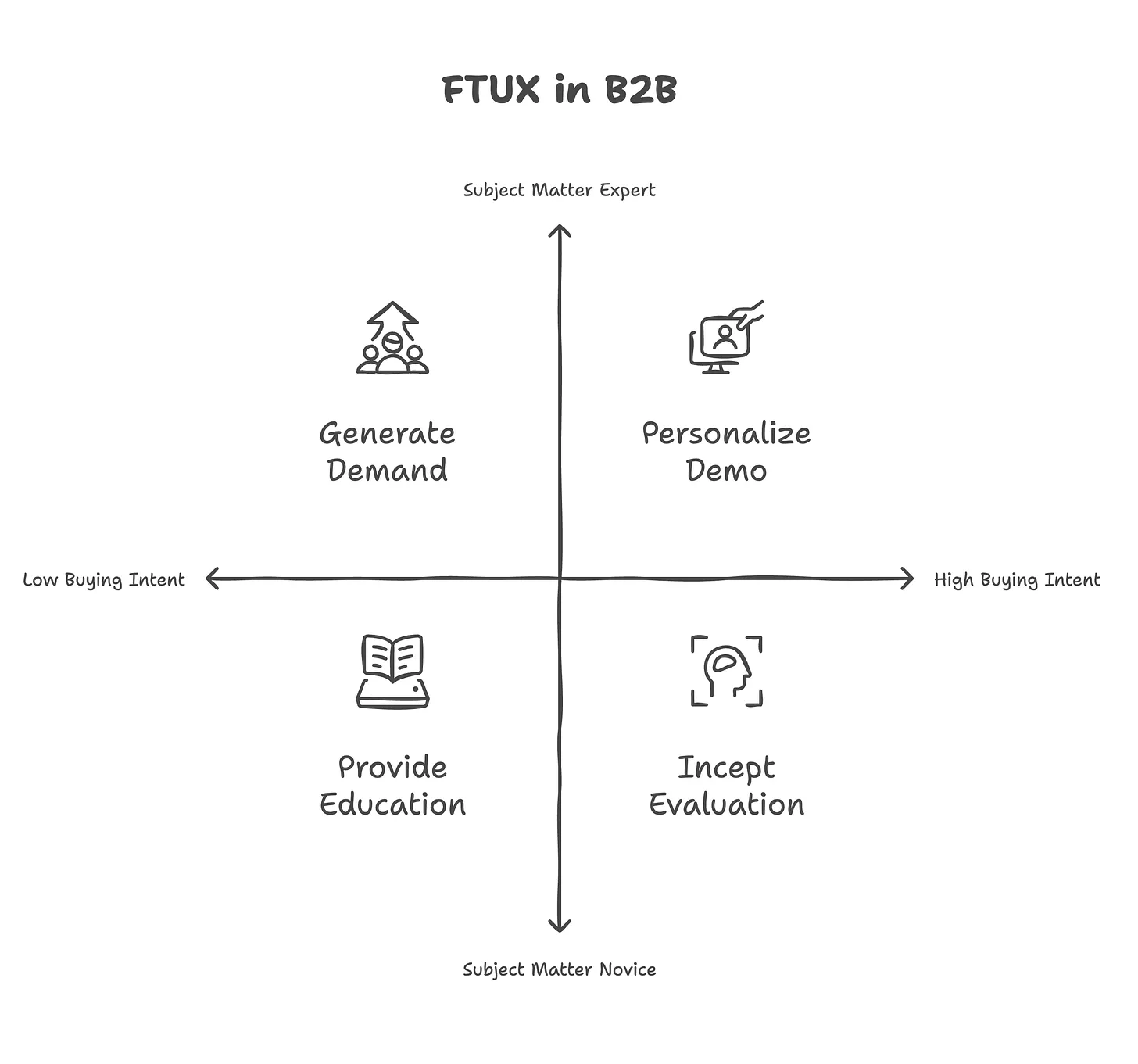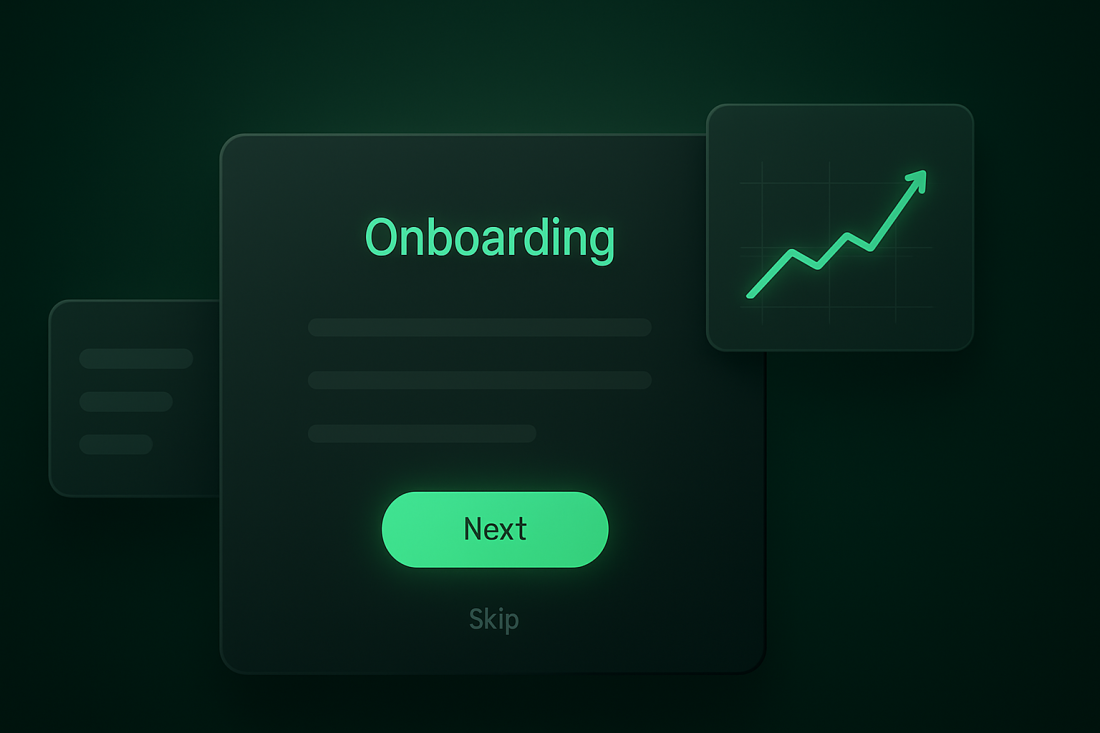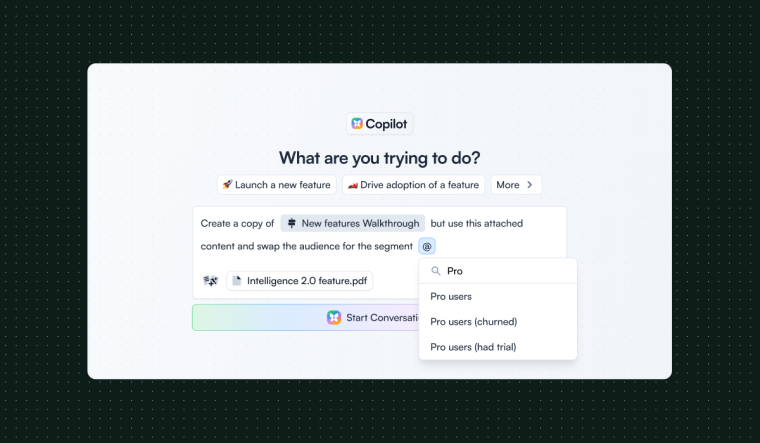AI won’t save your onboarding. Better judgment will. The future of onboarding isn’t just about shiny new features. It’s about using better empathy—backed by data, refined through pattern recognition, and delivered in a way that respects users. In this conversation, Pulkit Agrawal (CEO, Chameleon) and Ibrahim Bashir (former VP of Product at Amplitude) unpack why onboarding needs to catch up with how users actually behave in 2025.
From over-segmenting too late to slapping chatbots on rigid flows, the takeaway is clear: If you’re not considering how your product learns from users (and adapts to them), you’re already behind.
Every user walks the first mile 🚶♂️

“Every single user goes through onboarding. Not every user clicks your new feature, or reads your release notes. But onboarding? That’s the first mile. And if that’s bumpy, they might never get past it.”
This idea echoes what Scott Belsky has long championed: nail the first mile. Because that’s where users form their first impressions, and if it’s frustrating or confusing, they’ll bounce before they ever see the magic.
This is the hill worth dying on. While teams obsess over optimizing advanced workflows, the first experience most users have with your product is underpowered and overcomplicated. Instead of guessing their intent, why not ask? Instead of asking and forgetting—actually use it.
Ibrahim calls out the classic offense: “You ask for someone’s role during signup. Then never use it again. Why even collect that friction if it doesn’t shape the experience?”
Ibrahim notes this is more than just a missed opportunity—it’s an anti-pattern. Asking for information that never gets used not only creates friction, it erodes trust. Your first questions should help place the user in the right quadrant, not just pad your CRM.
And the data backs it up. Chameleon’s 2025 Benchmark Report found that only 18% of onboarding flows used any kind of personalization—despite 65% of tools collecting data at signup. That’s a whole lot of insight going to waste.
Stop calling it personalization if it doesn’t do anything
A dropdown at signup isn’t personalization. Just because it says “Hi {FirstName}” doesn’t mean it’s personalized.
“Segmentation is better than no segmentation. Precision is better than broad strokes. But real personalization means changing the experience as you learn—not just bucketing users once and calling it a day.” — Ibrahim
Pulkit agrees: “You’ll see the same onboarding flow for someone ready to buy and someone just kicking the tires. Why? Tire kickers aren’t going to implement. So give them something they will value.”
Enter: dynamic onboarding. Start broad, but adapt fast. As users interact, give them experiences that evolve. Contextual nudges. Progressive reveals. Real-time cohorting.
Pulkit introduced a simple but powerful mental model: a 2x2 FTUX quadrant (First-Time User Experience) that maps user intent against subject matter expertise. Whether someone’s a novice with low intent (teach), an expert with low intent (nurture), a novice with high intent (steer), or an expert with high intent (win)—your onboarding should adapt to match their mindset.
 Ibrahim brought this framework to life visually and stressed that while it’s a helpful starting point, it’s still just that... a starting point. Real personalization means moving beyond broad segmentation toward dynamic, real-time experiences that evolve as you learn more about the user.
Ibrahim brought this framework to life visually and stressed that while it’s a helpful starting point, it’s still just that... a starting point. Real personalization means moving beyond broad segmentation toward dynamic, real-time experiences that evolve as you learn more about the user.
The quadrant also reveals a deeper truth: product and GTM teams need to align early. That first-mile experience is where activation, intent, and conversion begin to intersect. It’s not just a product problem—or a growth problem—it’s a “who is this for, and what do they need right now?” problem.
And when it comes to activation, it’s not about showing off your best features. If expertise and intent aren’t aligned, even the slickest demo won’t land. Tire-kickers need context. Buyers need momentum.
AI won’t fix your onboarding, it'll show you what’s broken
AI can’t make judgment calls. But it can make patterns obvious. “Feed AI the users that didn’t convert, the ones who became power users, and ask it: what do these groups have in common? What are the hidden signals?” — Pulkit
Maybe you thought small teams were tire-kickers. But your AI shows that small teams who invited a second user within 24 hours have 3x higher activation.
Use AI for:
Pattern recognition in activation paths
Dynamic cohort detection
Generating checklists or onboarding flows based on usage
But let’s be clear: AI is your assistant, not your strategist. It’s your data intern, not your VP of Product.
Chat doesn’t equal conversation
“Just because it looks like a chat doesn’t mean it behaves like one. Most chatbots are just rigid flows with a smiley face slapped on top,” Ibrahim shared. Yes, conversational UX is the future. But that doesn’t mean your onboarding needs a chatbot.

“We want our products to feel conversational. But that doesn’t mean making users type everything. It means responding like a human would—with relevance, empathy, and context.”
Here’s what that looks like in practice:
Interactive checklists that evolve based on user actions. If someone completes a setup task, show them what’s next—not a static list. For example: checking off “Connect data source” triggers the next most relevant action like “Invite a teammate” or “Explore your first dashboard.”
Embedded CTAs that launch guidance in context. A “Create campaign” button can launch a targeted walkthrough if a user pauses—without disrupting those who already know what to do.
UI patterns that feel like part of the product. Think: a tooltip that appears when a user hovers over a confusing setting—not a chatbot that asks, “Need help?” five clicks too late.
The goal isn’t to simulate chat. It’s to simulate understanding. Show up at the right time, with the right thing, in a way that feels natural.
Onboarding fails because it shows up at the wrong time
It’s not the message. It’s the moment. “The number one reason users ignore onboarding is that it interrupts them. So stop guessing when to show it.” — Pulkit
Our 2025 Chameleon Benchmark Report data says:
Click-triggered tours have 2x the completion rate of time-based ones
Smart delays (based on user inactivity) perform 21% better than static timers
Launchers and checklists beat modals in both engagement and completion
Users who engage with checklists? They complete 5 tasks per session, on average. And product tours triggered from checklists hit a 67% completion rate.
And tour length? Four steps is the sweet spot. 4-step tours = 74% completion. 7+ steps? Just 16%.
👉 When in doubt, let users opt in. But make the value obvious.
Everboarding is the real game
Onboarding shouldn’t end. Not after the first session. Not even after activation. The best teams know that helping users succeed is an ongoing job—one that kicks in again every time the product evolves or the user’s needs shift.
That’s what everboarding is: ongoing education that reinforces your product’s most important workflows—not just the shiny new ones. “Don’t confuse everboarding with product updates. Everboarding is about the 20% of your product that drives 80% of value. Are users really getting that?” — Ibrahim
And as Ibrahim points out, your “product” isn’t just the interface. It’s also the documentation, demos, and training. The more these assets align with evolving user needs, the more value they can unlock—even months after sign-up.
Think of it as onboarding’s smarter, more strategic cousin. Instead of spraying a firehose of tooltips at new users, you surface helpful nudges when people actually need them—day 1, day 30, or day 300.
What we used to do:
Dump everything on the user in the first session and hope it sticks
What works now:
Drip guidance over time, based on what the user is doing (or not doing)
Use behavioral data to trigger continued learning:
Inactivity in high-impact flows
Skipped setup steps for critical features
Teams stuck in shallow usage patterns
The best onboarding experiences don’t just say “Welcome!”—they say “What’s next?” If your onboarding ends after the first login, you’re not onboarding. You’re just saying hello.
Native > intrusive

“The more jarring the pattern, the lower the engagement. Modals that pop in at the wrong time? Dead on arrival.”
Here’s the thing: onboarding isn’t just about what you say. It’s about how it shows up. When something feels out of place—like a clunky modal covering the screen—it gets dismissed. Literally. The best onboarding patterns feel like part of the product, not something bolted on after the fact.
That’s why native UI wins. Think banners tucked into real estate that already exists. Cards that live in the sidebar. Contextual tips that appear inline, exactly when they’re needed.
Here’s what the benchmark data shows:
Embedded experiences drive 20% higher engagement than modals
Image-based help beats video tutorials
Click-triggered flows outperform time-based ones by miles
Why? Because users don’t need a classroom. They just need a hint—at the right moment, in the right format. The takeaway: guide, don’t interrupt.
Measure it. Improve it. Repeat.
You can’t optimize what you don’t measure. Track:
Activation rate: Who’s actually getting to value?
Time-to-value: How long until that “aha” moment?
Feature adoption: Which core features are sticky?
User satisfaction: CSAT > NPS for most teams
And don’t sleep on micro-feedback. According to the benchmark data:
NPS survey completion = 9%
Button-based surveys = 32%
And 86% of respondents who take a survey leave a comment
Small questions, big insights.
The future of onboarding is agentic—but transparent
As onboarding becomes more adaptive and agentic—driven by smart systems that proactively guide users—it also needs to stay transparent. Because if users sense they’re being silently nudged or manipulated, they’ll want answers.

“If I realize I’m being agented, I want to inspect that agent. Why did it think this was right for me?”
Your onboarding agent shouldn’t feel like a black box. Make its logic legible.
Here’s how to design for agentic transparency:
Show your work: Explain why a user is seeing a recommendation (e.g. “We noticed you haven’t connected a data source yet.”)
Offer alternatives: Give users the option to skip, snooze, or explore other paths
Let users rewind: If the path didn’t help, make it easy to step back and try something else
Transparent onboarding doesn’t just earn trust, it increases conversions. Because when users understand why something is happening, they’re far more likely to go along with it.
Judgment is your unfair advantage
The best teams aren’t just building onboarding flows. They’re building muscle. Judgment about when to guide. When to listen. When to nudge. And when to get out of the way.
And as Ibrahim has written elsewhere, your best shot at earning long-term users is shaping how they understand the category from the first moment. Frame the value in your terms, and you tilt every comparison in your favor.

“Good onboarding is like good coaching. Sometimes you lead, sometimes you follow. But it’s always a conversation.”
So if you want to lead users to value? Drop the rigid playbook. Use better data. Make better calls. And meet people where they are.








